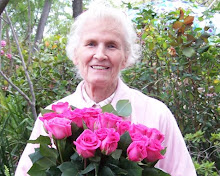ERNIE JOHNSON (COACH) FUHS 1943
Legendary football coach, Ernie Johnson, 87, of San Juan Capistrano, California, passed away at his home on September 15, 2013.
Ernie was born October 12, 1925 in Bruceville, Texas to William and Bessie Johnson. The family moved to Fullerton, California in 1927 when Ernie was 2 years old. He attended school from Elementary through Junior College in Fullerton. He played football, basketball, baseball and track at Fullerton High School and Fullerton Junior College.
After graduating from Fullerton High School in 1943, Ernie joined the Merchant Marines and served for 3 years during WWll. Upon discharge in 1946 he returned to school at Fullerton Junior College. In 1948 he went to San Jose State on a football scholarship. He graduated in 1951 and was immediately drafted into the Army during the Korean conflict. He spent 2 years in the U.S. Army Counter Intelligence Corps (CIC). Upon discharge from the Army in 1953 he attended UCLA and earned his General Secondary Teaching Credential. He returned to UCLA in 1959 and earned a Masters Degree.
Ernie taught and coached at El Rancho High School in Pico Rivera, CA. from 1954-1969. He experienced great success as the Head Football Coach from 1956-1969 winning CIF, State and National Championships. He was named California Coach of the Year in 1966. In 1969 he moved on to Long Beach State as their Defensive Coordinator. They led the nation in interceptions (39) that year. In 1970, he became Head Football Coach at Newport Harbor High School in Newport Beach, CA. That year they won their first championship in 28 years. From 1971-1977 Ernie was Head Football Coach at Cerritos College. In 1972 they won the South Coast Conference Championship and Ernie was named South Coast Conference Coach of the Year. He retired from Cerritos College in 1992.
In 2011, the football field at El Rancho High School was named Ernie Johnson Field. In 2013, the documentary film Touchdown Newport, about Ernie's 1970 season at Newport Harbor High School, was previewed at the Newport Beach Film Festival. It is soon to be released on DVD.
Ernie's retirement years were spent playing tennis, traveling the world and watching and attending high school, college and professional football games. Every morning, until he was no longer able, he walked 4 miles to the bakery to enjoy his coffee and beloved bear claw. Most of all he enjoyed spending time with his former players. They were and always will be his "boys".
Ernie was predeceased by his parents and son, Dirk Johnson. He is survived by his wife, Vicki who was at his side when he passed. Some of his last words were, "I had a great life", and that he did. He will be missed by many but his legacy will live on in all those he loved and mentored.
A Celebration of Life will be held at the El Rancho High School Gymnasium in Pico Rivera, CA on Sunday, November 3rd at 1PM. In lieu of flowers, memorials can be made to the Ernie Johnson Memorial Scholarship Fund, El Rancho High School 6501 S. Passons Blvd. Pico Rivera, CA 90660.
Published in Orange County Register on Oct. 26, 2013 (Available until Oct 26, 2014)
http://www.legacy.com/obituaries/orangecounty/obituary.aspx?n=william-ernest-ernie-johnson-coach&pid=167706641


